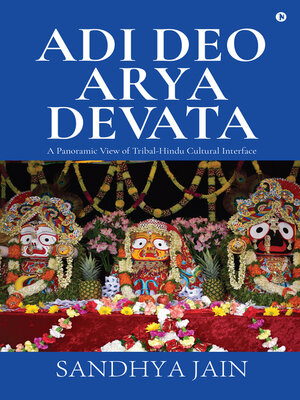
Sign up to save your library
With an OverDrive account, you can save your favorite libraries for at-a-glance information about availability. Find out more about OverDrive accounts.
Find this title in Libby, the library reading app by OverDrive.



Search for a digital library with this title
Title found at these libraries:
| Loading... |
The British claimed that India's Adivasi population lay beyond the pale of mainstream Hindu society. Yet even a cursory mapping of the spiritual-cultural landscape reveals a deep symbiotic relationship between tribals and non-tribals, which is amply reflected in the ancient literature and inscriptions. Indeed, it was also noted by colonial anthropologists and ethnographers (mainly British officials), who deliberately delinked tribals from Hindu society through the imposition of racial categories and census classifications.
Tribals have made an enormous contribution to India's civilisation; all major gods of the Indic tradition have tribal links. Shiva was worshipped by forest-dwelling communities in large parts of the country, as were Vishnu's incarnations as Varaha (boar) and Narasimha (lion). Vishnu, in fact, evolved out of several distinct deities, notably Vasudeva, the supreme lord of the Vrishni/Satvata tribe; Krishna of the Yadava clan; Gopala of the Abhira tribe and Narayana of the Hindukush mountains. Similarly, Gautama Buddha hailed from the Sakya tribe; Vardhaman Mahavira was a scion of the Jnatrikas.
There is to this day a close relationship between the Kurumba, Lambadi, Yenadi, Yerukula and Chenchu tribes and Shri Venkateshwar of Tirupathi. Lord Ayyappam in Kerala and Mata Vaishno Devi in Jammu also appear to have tribal links. All these gods and temples, as also that of Jagannath in Puri, enjoy a pre-eminent status in the classical Hindu pantheon.
Even caste, long regarded as the keynote of Hindu society, possibly originated in the tribal clan or gotra. The term 'jat' or 'jati' is used equally for caste and tribe in most Indian languages and tribal dialects. Moreover, the defining characteristics of tribes apply equally to castes, such as claims of descent from a common ancestor, common language, endogamy and clan exogamy, caste/tribal councils, certain taboos in matters of diet and marriage alliances, presence of hierarchy within groups and limited self-sufficiency.
Mahatma Gandhi insisted that tribals are an inalienable part of Hindu society. This work suggests that tribal society constitutes the keynote and the bedrock of Hindu civilisation.






